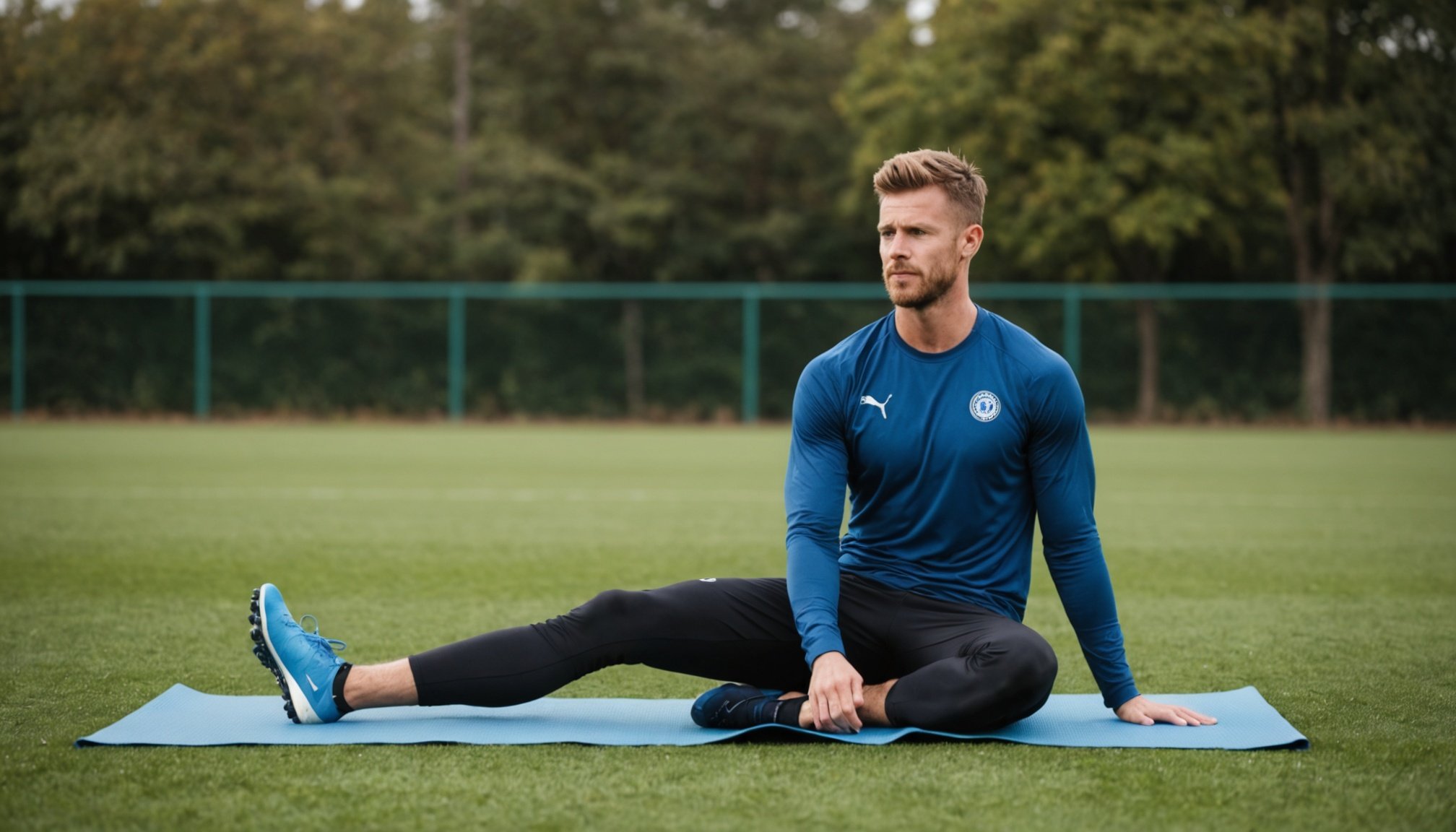Benefits of Yoga for Football Players
Football players can reap numerous yoga benefits, especially in the areas of flexibility and injury prevention. Enhanced flexibility is crucial for improving performance on the field, as it allows for a greater range of motion in movements such as kicking, running, and sudden directional changes. By engaging in yoga, players improve their mobility, which directly translates to agility on the pitch.
Injury prevention is another significant advantage. Football is inherently a high-impact sport, and yoga aids players by fostering better body awareness and strength. This heightened awareness helps players recognize the limits of their bodies, reducing the risk of injuries. Additionally, the strength gained from yoga practice supports muscles and joints used in football, further contributing to injury prevention.
Also to see : Top Strategies for Football Academies to Enhance Technical Skills in Young Athletes
Another benefit includes enhanced mental capabilities. Yoga practices often incorporate techniques that improve focus and mental resilience. For football players, possessing strong mental characteristics is essential, especially during high-pressure game situations. This focus not only helps in making precise decisions but also enhances communication and teamwork on the field.
Overall, by integrating yoga into their training routines, football players can experience a holistic improvement in both physical and mental aspects of their game.
This might interest you : Top Strategies for Safeguarding Youth Football Players Against Common Injuries
Scientific Insights on Yoga’s Impact on Athletic Performance
Recent scientific research into yoga’s impact on athletic performance has revealed a myriad of benefits. Studies highlight improved flexibility, balance, and mental clarity among athletes who incorporate yoga into their routines. Yoga not only enhances physical attributes such as muscle strength and joint flexibility but also supports mental resilience, essential for peak performance in sports.
In particular, footballers practising yoga have shown notable physiological changes. Enhanced breathing techniques lead to better oxygen intake and energy efficiency. Moreover, increased flexibility reduces the risk of injuries, vital for maintaining sustained performance on the field. As athletes push their boundaries, these physiological advantages can be a game changer in their athletic performance.
Sports scientists frequently endorse yoga for its holistic benefits. Dr. Emily Carter, a leading figure in sports science, asserts that yoga perfectly complements traditional training regimes. By aiding recovery and promoting mental calm, yoga enables athletes to focus and perform under pressure. This endorsement from experts underlines the role yoga can play in enhancing athletic abilities.
Thus, scientific insights underscore yoga’s invaluable contribution to maximizing potential in athletics, making it a worthy component of a comprehensive training regimen.
Expert Opinions on Integrating Yoga into Football Training
The concept of integrating yoga into football training has gained traction, with professional trainers emphasizing its benefits. Coaches from successful teams frequently advocate for yoga, citing its role in enhancing player flexibility and mental conditioning. These insights emerge from interviews, showcasing the weight of yoga expert opinions in modern athletic circles.
Physiotherapists offer compelling arguments, particularly regarding injury rehabilitation. Their insights reveal yoga’s efficacy in improving balance and body awareness, potentially reducing injury recurrence. The system inputs underscore the necessity of strengthening core muscles and stabilizing joints, both of which yoga practices directly address.
Furthermore, case studies highlight football teams that have successfully adopted yoga routines. Teams such as Manchester City and LA Galaxy, for instance, have publicly endorsed yoga for its holistic benefits. Analysis of these teams indicates an improvement in recovery times and injury rates, establishing a robust case for yoga’s inclusion in training regimens.
In conclusion, while traditional football training prioritizes physical endurance and skill, incorporating yoga offers a comprehensive approach. Professional endorsements, paired with physiotherapists’ recommendations, underscore yoga’s significant contributions to both performance enhancement and injury prevention.
Key Yoga Poses for Football Players
Football players can greatly enhance their performance and recovery through targeted yoga poses. These poses not only improve flexibility and strength but also promote relaxation and muscle recovery.
Flexibility Enhancing Poses
Flexibility is crucial for football players to prevent injuries. Incorporating poses like Downward-Facing Dog and Triangle Pose can aid in stretching the hamstrings and calves, muscles that are extensively used in football. Practising these poses regularly increases range of motion and agility on the field.
Strength Building Poses
To build strength, football players should focus on poses that engage the core, hips, and legs. Warrior II and Chair Pose are excellent options. These poses help develop muscular endurance, which is essential for maintaining robust performance throughout a game. It’s important to maintain proper form to avoid strain.
Recovery and Relaxation Poses
After intense training or matches, incorporating yoga poses designed for recovery can accelerate muscle repair and reduce soreness. Child’s Pose and Legs-Up-the-Wall Pose are perfect for this purpose. These poses facilitate blood flow and relaxation, allowing the body to recover effectively.
Tips for Safe Practice:
- Always warm-up before starting your yoga session.
- Focus on breathing deeply and steadily through each pose.
- Modify poses based on your comfort and ability level.
Practical Tips for Incorporating Yoga into Training Regimens
Incorporating yoga into football training offers numerous benefits, enhancing both physical and mental performance. To seamlessly integrate yoga into your regimen, consider these strategies. First, when scheduling yoga sessions, align them with regular training to avoid exhaustion and maximise recovery. A lighter, restorative session can follow an intense day, or a dynamic flow can precede or replace a warm-up.
Customizing yoga routines is crucial for addressing individual player needs. Evaluate each player’s strengths and weaknesses and select poses that enhance flexibility and core stability, or aid muscle recovery. A defensive player, for example, might benefit from poses that improve agility, while a striker may focus on balance and mental focus.
Finding qualified yoga instructors who understand athletic training can significantly enhance the benefits, as they can tailor sessions to complement sports schedules and objectives. Resources like sports clubs, online directories, or reviews from fellow athletes can point you towards instructors with specific experience in this field.
By effectively incorporating yoga into football training routines, players can enjoy a balanced regimen that supports both physical prowess and mental resilience. Whether you are a coach or a player, ensuring careful consideration of scheduling, customization, and instruction will yield tangible improvements.











